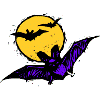Wildlife Disease and Zoonotics

Zoonotics and Wildlife Disease: Publications
Document Type
Article
Date of this Version
August 2004
Abstract
Starting in 1995 hunter harvested, road killed, and other dead deer were examined for bovine TB infection. White-tailed deer in Michigan have since been tested year round for bovine TB. Testing revealed that most of the TB positive animals were located in a core area in the northeastern part of Michigan's Lower Peninsula. The core area is located around the four corners where the counties of Montmorency, Alpena, Oscoda and Alcona meet. Antrim, Crawford, Emmet, Iosco, Mecosta, Osceola, Otsego, Presque Isle, and Roscommon Counties have also had animals test positive for bovine TB.
In the U.S. today, the threat of humans contracting bovine TB from animals is extremely remote. Health officials have confidence in the state's meat and milk supply. At risk are Michigan's deer herd and other wildlife species with their many social, ecological, and economic values as well as Michigan's livestock industry. By continuing to eliminate TB-infected animals from wild and domestic animal populations, paying close attention to the meat inspection and pasteurization processes, using proper food handling, and good management practices, the chance of bovine TB transmission from animals to humans is virtually eliminated.


Comments
Copyright © 2006 State of Michigan